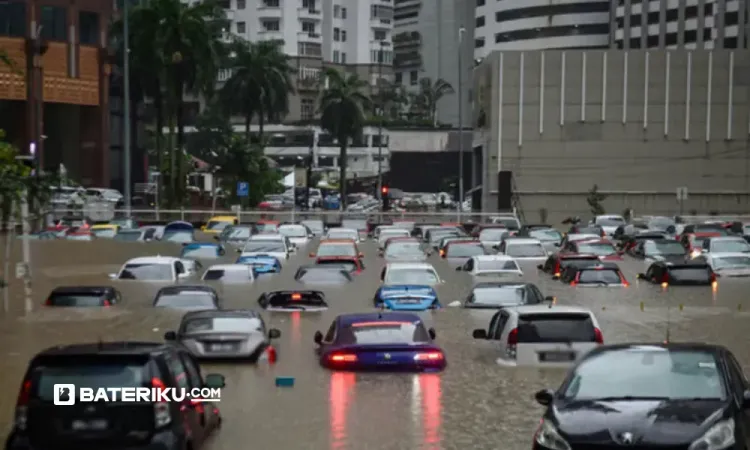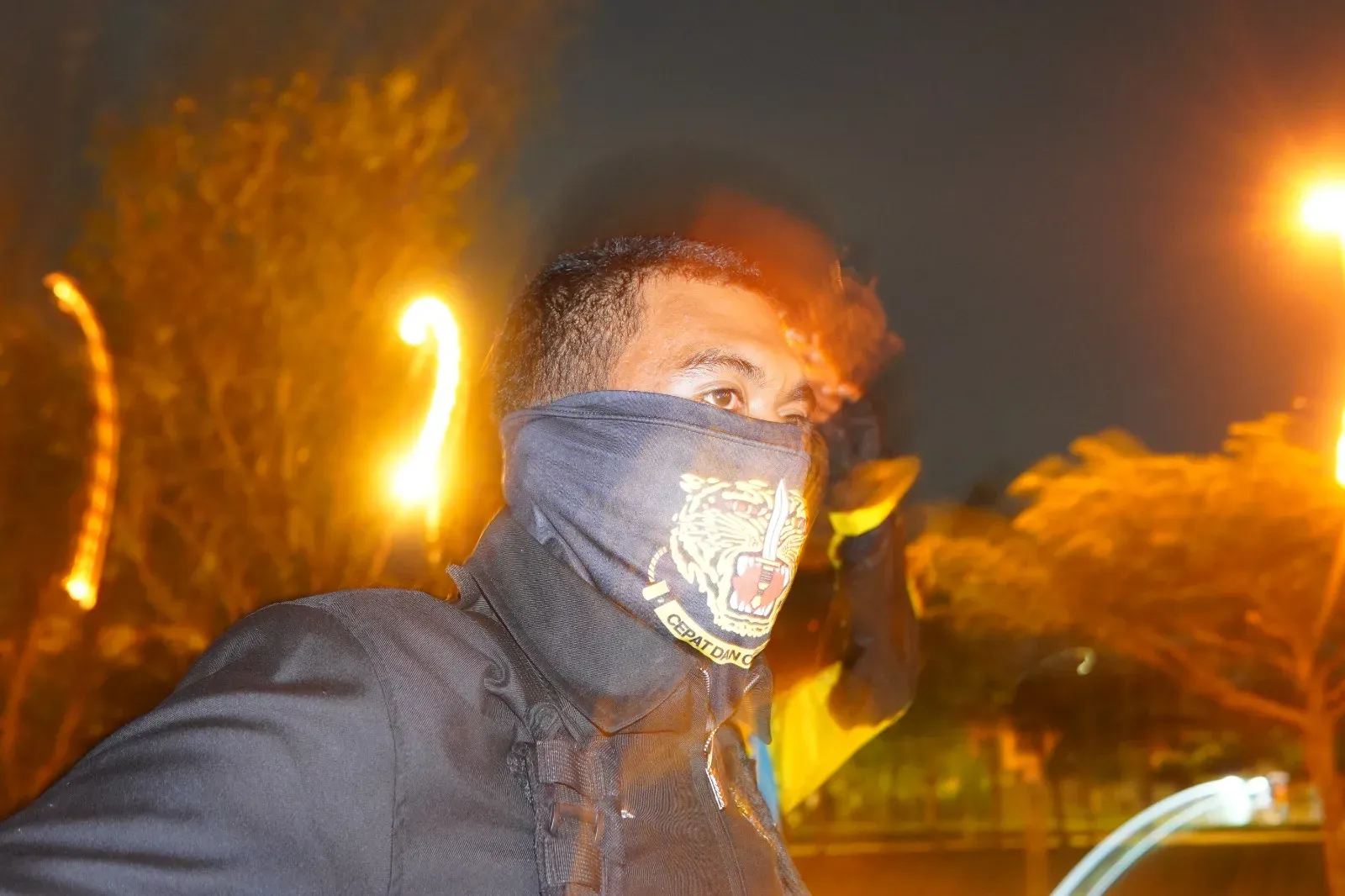Year-end in Malaysia is always synonymous with heavy rain and unpredictable weather. During the Northeast Monsoon, most states especially along the East Coast experience frequent downpours almost every day. While rain brings freshness and cooler temperatures, it also signals the start of a challenging season for both urban and rural residents.
In the Klang Valley, flash floods are no longer a rare occurrence. Almost every time it rains heavily, several areas in Kuala Lumpur and nearby regions are hit by sudden rising waters. According to DBKL’s August 2024 report, multiple flood-prone zones have been identified around the capital and parts of Selangor.
These floods not only cause severe traffic congestion but also lead to serious vehicle damage, especially to the car’s electrical and battery systems. Many drivers are shocked to find their cars unable to start even after the water subsides.
List of Flash Flood-Prone Areas: Highways Most Affected
Based on DBKL and local media reports, here are some of the most flood-prone roads in Kuala Lumpur:
- Jalan Syed Putra
- Jalan Maharajalela
- Jalan Tun Razak
- Jalan Pahang & Jalan Pahang Barat
- Jalan Raja Chulan
- Jalan Peel
- Jalan Dutamas
- Jalan Genting Kelang
- Lorong Titiwangsa 11
- Jalan Sultan Azlan Shah
- Pintasan Segambut
- Jalan Kuching
- Jalan Kepong
- Jalan Universiti (KL–PJ border)
Meanwhile, several high-risk areas in Selangor include:
- Taman Sri Muda
- Seksyen 13, Shah Alam
- Kampung Kubu Gajah
- Jalan Kebun / Bukit Kemuning
- Kampung Tengah / Kampung Baru Hicom
If you use any of these routes, it’s best to replan your journey whenever rainfall exceeds 6 hours or continues overnight.
Main Factors Behind the Increase in Flash Floods
- Clogged drainage systems: Poorly maintained drains prevent water from flowing properly.
- Uncontrolled rapid development: Green spaces are replaced by buildings and roads, reducing natural water absorption.
- Extreme rainfall caused by climate change.
- Waste and construction debris blocking drainage paths.
- Low-lying terrain and inefficient road design.
3 Vehicle Safety Tips During Floods
1. Avoid Parking Near Rivers or Underground Parking Lots
Especially during the rainy season. These are the first areas to flood when river levels rise. If underground parking fills with water, vehicles will not only be submerged but also difficult to retrieve due to limited access.
2. Avoid Driving Through Floodwater on Highways
If you see stagnant water on the road, do not attempt to drive through it, even if other vehicles seem to make it. Strong currents can push your car, and water entering the engine bay can cause serious damage to:
- Electrical system and battery
- Alternator and starter motor
- ECU (Engine Control Unit)
If the water level exceeds half of your tire, it’s safer to turn around or find another route.
3. Turn Off the Engine If Trapped
If water starts rising around your vehicle, switch off the engine immediately. Do not try to restart it doing so may cause short circuits and permanent damage to the electrical system. Instead, exit the vehicle if it’s safe and call for roadside assistance such as Bateriku.com for towing or on-site inspection.
Oh No, My Car Is Drowning!
It’s called a flash flood for a reason we can never predict how quickly the water will rise. You may have tried to avoid flooded areas, but if your car still ends up submerged or swept away by strong currents, what should you do?
1. Prioritize Your Life, Not the Vehicle
If the flood current becomes strong and the car starts moving, don’t fight the current or stay inside too long. Unbuckle your seatbelt and lower the window immediately before the electrical system fails. If the power windows don’t work, use a hard object (like an emergency hammer) to break the side or rear glass. Get out quickly and hold onto something sturdy or move to higher ground.
2. Do Not Try to Save Personal Belongings
Many victims make the mistake of trying to grab their phones, bags, or valuables. Don’t waste time floodwaters can be strong enough to knock a person over even at only 0.5 meters deep.
3. Call Emergency Services Immediately
Contact 999 or the Fire & Rescue Department of Malaysia (Bomba) if others are trapped nearby. Provide accurate details of your location and surroundings. If your vehicle is submerged or swept away, do not attempt a rescue yourself wait for professionals.
4. After the Water Recedes, Do Not Start the Engine
First, check these crucial parts:
- Engine oil & transmission fluid: If it looks murky like “milk tea,” it’s mixed with water and needs to be changed immediately.
- Battery & fuses: Water can cause short circuits even if the car looks fine outside.
- nterior: Dry the seats and carpet to prevent mold, odor, and rust.

5. Keep Records for Insurance Claims
If your car is covered by Special Perils insurance (flood, storm, landslide), prepare the following:
- Photos of vehicle damage
- Location of incident
- Police or fire department report
- Proof of towing or emergency assistance call
When facing floods, your safety always comes first. Cars can be replaced lives cannot.
Impact of Flash Floods on Drivers and Vehicles
Every time flash floods occur, thousands of road users are affected. The major impacts include:
Every time flash floods occur in Malaysia, thousands of road users are affected by various severe consequences. One of the most common effects is heavy traffic congestion, as vehicles become trapped in floodwater, disrupting travel routes and causing long delays.
In addition, vehicle damage caused by flash floods is a major concern. Critical components such as the engine, electrical system, ECU, and car battery often suffer extensive damage when exposed to rising water. Without prompt inspection, repair costs can escalate significantly.
From a safety standpoint, the danger to drivers is extremely high. Many motorists attempt to drive through flooded roads without realizing the true depth of the water, which can lead to vehicles being swept away by strong currents. This poses a serious risk to both lives and property.

Need Help After a Flood? Contact Bateriku for Professional Assistance
Bateriku provides:
- 24-hour towing service to a safe workshop
- Free battery & electrical system inspection
- Technical advice & post-flood vehicle checks
The team from Bateriku is trained to handle flooded vehicles safely and efficiently.
When the situation is safe, call Bateriku for help from towing to post-flood inspections available 24/7.
“The water may rise anytime, but our help is always ready.”
Bateriku Always Here, Wherever You Are.

